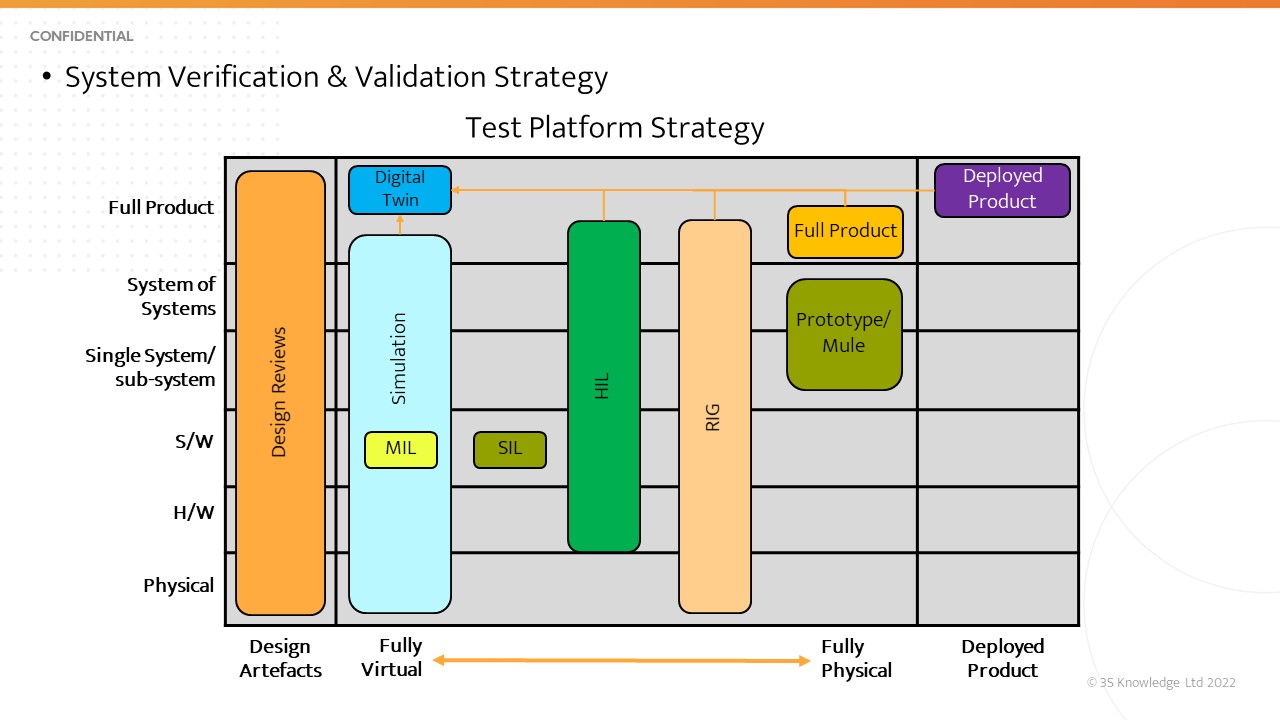Test Strategy Template (A Guide)

Test strategy template
This article examines key points when developing a system verification and validation test strategy. If you wish, you could use it as a test strategy template.
Organizations invariably have a plan for their products and allocate resources accordingly. However, it’s beneficial to consider a strategy for testing these products as a preliminary activity.
What’s your strategy?
Let’s begin by asking the fundamental question that must be answered before any strategic plan can be created –
Do you have a test strategy in place?
If you have one, it should hold information, such as the figures above, detailing which test platforms are used at various levels and stages of development. If you do not, you risk inefficiency (wasting money on unnecessary testing resources, repeating tests, etc.) or ineffectiveness (insufficient testing, delayed testing/defect discovery, undiscovered defects, etc.).
So, an effective test strategy is vital. It’s often not appreciated that acquiring test capabilities can take longer than developing the product itself; hence, it must be kicked off in advance.
Key Considerations:
Often, the output from testing is seen only as defect discovery. While this is useful (particularly when discovered early), a major advantage of testing is also risk reduction. It’s helpful to view the test strategy for a particular project as an exercise to mitigate risks.
As a result, a test strategy should prioritize the following:
- Where are the major risks?
- When can representative test artefacts be available?
- What test methods/platforms can be used most effectively to find defects or confirm that none exist?
Emphasis on Lower Levels
Test strategies that instill confidence in some system elements before tackling the whole product are preferable from both a time and cost perspective. The principle of separation of concerns always comes in handy in testing systems. It’s much easier to achieve test coverage and find route cause at a lower level than at a higher one.
There is always a risk of emergent issues when the system elements are put together, but they are much easier to find if defects at lower levels have been discovered and removed.
Design as a Testable Artefact
While devising your test strategy, it’s important to remember that testing is integral to the entire product development process. Models aren’t the only specifications or requirements that should be reviewed; it’s helpful to consider the design a testable artefact. It is also true that testing does not end once the product is delivered to market; for instance, conformity of production testing, upgrade testing, testing to find defects not found before launch, and testing of the product’s in-market behaviour are all instances of ongoing testing.
Test automation
Test automation is essential when products are being created in an agile manner and will need frequent regression tests. It’s also helpful for tracking out difficult-to-reproduce flaws that require careful regulation of multiple factors. Give test automation a shot in your test strategy, and break away from the norm.
Include a Plan for Test Data Management
Consider how you’ll manage test data while creating a test strategy. Massive amounts of data will be generated throughout testing, which will need to be managed and analysed as part of your test strategy.
Summary
We hope you find this test strategy template useful. Although the areas of testing covered in this piece may be extensive, the pointers above can provide a few takeaways that you can apply to your testing strategy in-house.
We would love to hear from you if you have any thoughts on this blog post. Remember to visit our other blogs for all things functional safety.
